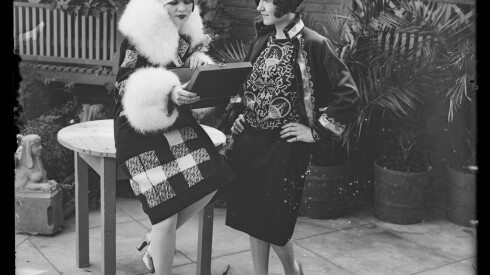Picture Chicago in the year 1900: The trains are packed, department stores glitter on State Street and thousands of young women are pouring in from all over the country and world. They’re looking for work and seeking freedom and autonomy.
Reformers and society at large at the time named these women “adrift” — it meant if they were without a husband or family they were lonely, unprotected and vulnerable.
“The notion at the time was that a woman without a family was unprotected, that she was flotsam and jetsam on the sea of life, floating adrift that she didn’t have any anchor of home,” said professor Joanne Meyerowitz, author of “Women Adrift, Independent Wage Earners in Chicago, 1880-1939.”
But these women weren’t drifting at all; they were making choices, taking them to different addresses.
A Curious City listener asked, “When single women started coming to Chicago, where did they live?” The simple answer: boarding houses, furnished flats and, yes, brothels. However, to talk about the types of housing available to single women, the question really asks so much more. It ushers us to the precipice of a portal into Chicago history that paints a broad and colorful picture about women and labor at the turn of the century. Here are a few historic examples of where you’d find single women living more than a century ago.
The Eleanor Club
The Eleanor Club started in 1898 and ran for more than a century before closing in 2002. Ina Law Robertson, a University of Chicago grad who saw how badly young women needed decent, affordable housing, founded the organization. The first building in Hyde Park looked like a cross between a dorm and a boarding house. Residents lived in small private rooms that included hearty meals in sunny dining halls, and cozy parlors where evenings meant piano music or card games instead of lonely dinners or sketchy lodgings. Soon there were multiple Eleanor Clubs around Chicago, plus a summer retreat in Wisconsin. For many women, it was their first taste of living on their own terms — respectably, safely and with friends close by.
The Elam House
Tucked into Chicago’s Bronzeville neighborhood at 4726 South King Drive, the Elam House was more than a boarding home — it was a lifeline. Built in 1903 as a grand mansion, it was transformed in 1926 by Melissia Ann Elam, a daughter of formerly enslaved parents, into a safe residence for Black women migrating to the city. At a time when most boarding houses either excluded them or enforced segregation, Elam offered rooms, meals and community — a place to live while working, saving and building networks in a city that often shut its doors to Black women.
“ Settlement houses would’ve been an option, but not all settlement houses were actually open to Black women or prioritizing the needs of Black women from the South,” said Jovanna Jones, professor of African American Literature and Culture at Harvard University.
The Elam House opened for this exact reason. Up to 35 women lived there at a time, sharing stories, support and the daily grind of Chicago life. Beyond housing, it became a cultural hub, hosting events such as the state convention for Black women in 1936 and connecting residents to a larger civic world.
Today, the mansion still stands as a Chicago landmark — a reminder of the resilience, resourcefulness and independence of Black women carving out their place in a rapidly changing city. After Melissia Ann Elam died in 1941, her niece, Lauretta Peyton, took over management of the home, keeping it running until her own death in 1953. Demand for boarding homes declined in the following years, and the Elam House gradually stopped functioning as a full-time residence. By 1978, only six women still lived there.
The Everleigh Club
Finally, there was the Levee District, a notorious area located in today’s South Loop neighborhood. Sisters Ada and Minna Everleigh ran what became the most infamous brothel in Chicago: the Everleigh Club. From 1900 to 1911, their mansion gleamed with chandeliers, velvet sofas and champagne fountains. Unlike most brothels of the day, it was opulent and tightly managed. The women who worked there — whom the sisters called “butterflies” — received elegant rooms, beautiful clothes and protection from the violence and poverty common in the sex trade. For the women, the Everleigh Club wasn’t just a workplace; it was also a residence and, in some ways, a safer deal than a grimy tenement or a low-paying job. Reformers were horrified, but the club showed another truth: Women sometimes chose sex work because it meant good money, security and a roof over their heads.
Beyond ‘women adrift’
Taken together, these residents show something important about single women in Chicago at this time of rapid migration and growth: They weren’t aimlessly floating through the city, waiting to be saved. They were navigating options — clubs like Eleanor, havens like Elam or even brothels like the Everleigh, which, for all their notoriety, offered security and community too.
The stereotype of “women adrift” never captured that reality. At the turn of the century, women were doing what they’ve always done in big cities: weighing risks, seizing opportunities and building lives on their own terms — one rented room, one shared meal or one chandelier-lit parlor at a time. The “woman adrift” stereotype later became culturally emblematic of women from this era. Looking back, Meyerowitz said, “the pathetic ‘women adrift’ were seen as pioneers in the city.”
Ari Mejia is an audio producer in Chicago.



